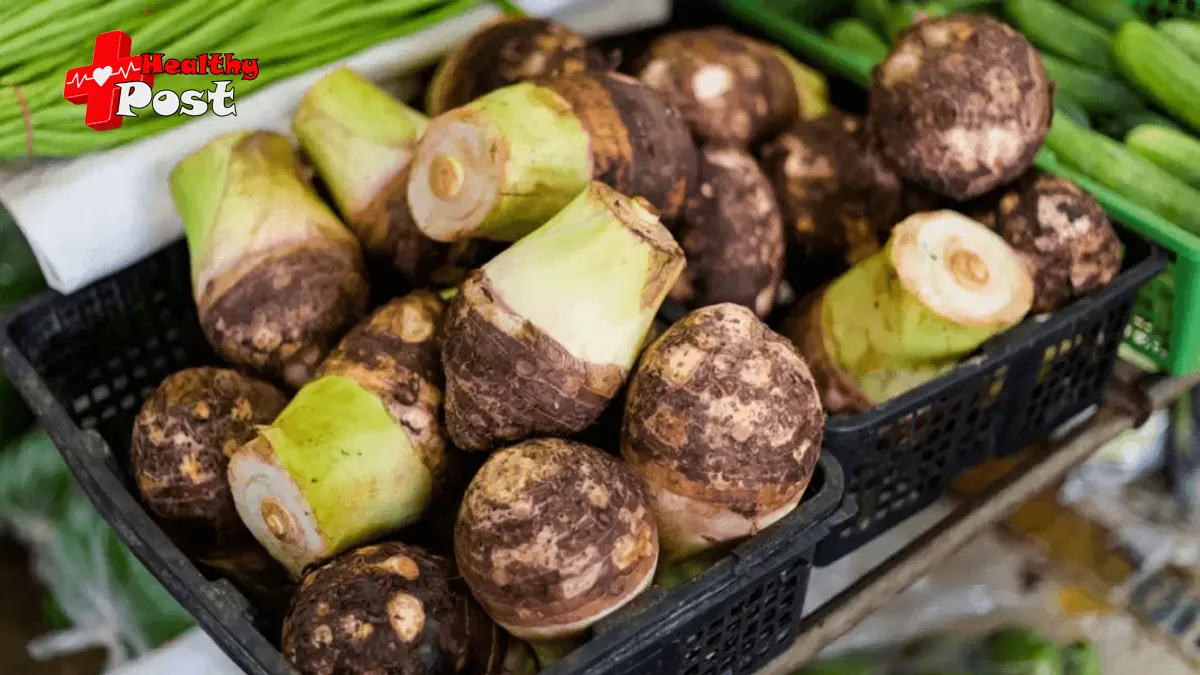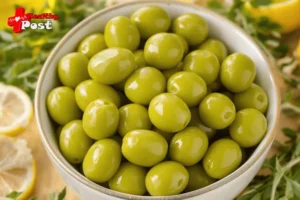
The efficacy of taro – 13 amazing Taro benefits for health
Taro is a starchy root vegetable that has brown skin and white flesh with purple spots throughout. When cooked, it has a mildly sweet flavor and a texture similar to that of a potato. Taro is a great source of fiber and other nutrients and offers a variety of potential health benefits, including improved blood sugar management, gut and heart health.
Here are 13 taro benefits for health.
Rich in fiber and other important nutrients
132 grams of cooked taro contains 187 calories—mostly from carbohydrates—and less than 1 gram each of protein and fat. As a result, taro contains a variety of nutrients that people don’t usually get enough of, such as fiber, potassium, magnesium, and vitamins C and E. Taro is a good source of fiber and many vitamins and minerals that are often lacking in diets.
Helps control blood sugar levels
Although taro is a starchy vegetable, it contains two types of carbohydrates that may benefit blood sugar control: fiber and resistant starch .
Fiber is a carbohydrate that humans cannot digest. Since it is not absorbed, it has no effect on blood sugar levels. It also helps slow the digestion and absorption of other carbohydrates, preventing large spikes in blood sugar after a meal.
A high-fiber diet — containing up to 42 grams per day — can lower blood sugar levels in people with type 2 diabetes by about 10 mg/dL.
Taro also contains a special type of starch called resistant starch, which humans cannot digest and therefore does not raise blood sugar levels. About 12% of the starch in cooked taro root is resistant starch, making it one of the better sources of this nutrient. This combination of resistant starch and fiber makes taro a great carbohydrate choice — especially for people with diabetes.
Reduces risk of heart disease
The fiber and resistant starch in taro root may also help reduce the risk of heart disease. People who eat more fiber have lower rates of heart disease. Research has found that for every additional 10 grams of fiber consumed per day, the risk of dying from heart disease is reduced by 17%. This is thought to be partly due to the cholesterol-lowering effects of fiber.
Taro root contains more than 6 grams of fiber per cup (132 grams) — more than twice the amount in 138 grams of potatoes — making it an excellent source of fiber. It also provides resistant starch, which lowers cholesterol and has been linked to a reduced risk of heart disease. Taro root is rich in fiber and resistant starch, which may help lower cholesterol and reduce the risk of heart disease.
Provides anti-cancer properties
Taro root contains plant-based compounds called polyphenols that have a variety of health benefits, including the potential to reduce cancer risk. The main polyphenol in taro is quercetin , which is also found in large quantities in onions, apples and tea. Quercetin can trigger cancer cell death and slow the growth of several types of cancer.
It’s also a powerful antioxidant that can protect your body from excessive free radical damage, which has been linked to cancer. Taro root contains polyphenols and antioxidants that may fight cancer growth and protect your body from oxidative stress.
Helps with weight loss
Taro is a good source of fiber, with 6.7 grams per cup (132 grams). Studies have found that people who eat more fiber tend to weigh less and have less body fat. This may be because fiber slows stomach emptying, which can keep you fuller longer and reduce the number of calories you eat throughout the day. Over time, this may lead to weight loss.
The resistant starch in taro may have a similar effect. Men who took a supplement containing 24 grams of resistant starch before a meal ate about 6% fewer calories and had lower insulin levels after the meal.
Due to its high fiber and resistant starch content, taro may increase feelings of fullness, reduce overall calorie intake, and increase fat burning, potentially leading to weight loss and reduction in body fat.
Good for your gut
Since taro root contains high amounts of fiber and resistant starch, it may be beneficial for your gut health. Your body doesn’t digest or absorb fiber and resistant starch, so they stay in your gut. When they reach your colon, they become food for the microbes in your gut and promote the growth of good bacteria.
When your gut bacteria ferment these fibers, they produce short-chain fatty acids that nourish the cells lining your intestines, keeping them healthy and strong. A diet rich in resistant starch improves colon health by promoting the production of short-chain fatty acids and reducing damage to colon cells.
The fiber and resistant starch in taro are fermented by intestinal bacteria to form short-chain fatty acids, which can prevent colon cancer and inflammatory bowel disease.
Lowers blood pressure and improves muscle health
Anyone who has high blood pressure can tell you that one thing to avoid is sodium. This vegetable is perfect for that purpose. It’s low in sodium, just enough to keep your kidneys functioning properly, but not so much that you might have a heart attack.
Contains high amounts of magnesium and vitamin E , both of which are known to improve metabolism and maintain muscle mass. Dietary magnesium can take your physical abilities to the next level. It has been shown to improve gait speed, grip strength, and bodyweight exercises.
Vitamin E, on the other hand, is a known way to relieve muscle fatigue. Taro is also a good source of carbohydrates, which can seriously help rebuild muscle fibers after a period of intense activity.
Cleanse the stomach
Your digestive system is truly amazing. However, that doesn’t mean it’s limitless. There are some upper limits to the capabilities of this important organ. For example, it can’t digest fiber; however, it also can’t function properly without it. A lack of fiber in your diet can lead to constipation or stool retention.
Taro roots contain a lot of fiber, so they are essential for the health of the gastrointestinal tract (GI tract). They make up the bulk of stool and aid in peristalsis, which is the mechanism by which food moves through the small and large intestines.
Strengthens bones and teeth
Taro root is rich in magnesium and vitamin E, both of which are essential for maintaining the structural integrity of bones and teeth. It can help you maintain oral health and reduce the risk of fractures by helping bones grow and ultimately increase bone density. Vitamins A and E, along with the antioxidants in taro root, can help make your skin clearer.
It does this by influencing the intercellular signaling pathways that lead to skin damage. Thus, they provide protection from photodamage and pollution.
Prevent aging
The rich antioxidants in this vegetable can reduce the stress caused by free radicals in our body. It also has the ability to promote cell growth. Taro can promote healthier and fresher skin. It can act as a powerful deterrent to the appearance of blemishes, dark spots, and wrinkles.
Improved vision
Taro root contains potent antioxidants such as beta-carotene and cryptoxanthin . This wonder vegetable can be a great aid in improving vision. These compounds are known to reduce the risk of macular degeneration, plus it is widely accepted as a dietary change that can prevent cataracts and many other eye diseases.
Enhances immunity
Your immune system is your body’s defense against attacks from bacteria and viruses. It’s vital to our survival because it keeps you from getting the flu twice during flu season.
The presence of the previously mentioned antioxidants in taro root can help strengthen it. In addition to these antioxidant properties, they also have hypocholesterolemic, hypoglycemic, antimicrobial and immunomodulatory effects. All of these properties are related to the presence of bioactive compounds, such as bioactive proteins and phytic acid.
Vitamin C is known to boost our body’s defenses against many common diseases, such as COPD and the common flu. Antioxidants detoxify free radicals in the body and prevent cell damage.
Improves blood circulation and hair growth
Your body needs iron and copper for proper blood circulation. Iron is an important component of the blood and is primarily responsible for the transport of oxygen throughout the body. Therefore, taro helps prevent iron deficiency and helps avoid fatigue, headaches, and poor concentration.
Taro root is rich in folate and iron, which are key to new hair cell growth and the health of hair follicles. These nutrients increase hair volume by promoting the growth of new hair strands. The copper in the vegetable can inhibit graying and make your hair look more lustrous.
Easy to add to your diet
The texture of taro is starchy and its flavor is mild and slightly sweet, similar to sweet potato. It can be used in both sweet and savory dishes.
Ways to eat include:
- Taro Chips: Slice the taro into thin slices and bake or deep-fry them into chips.
- Hanhuang style: Steam the taro and mash it into a purple puree.
- Taro Tea: Mix taro in boba tea or use taro powder for a beautiful purple drink.
- Taro buns: sweet taro paste baked in a buttery pastry dough for a dessert.
- Taro Cake: Mix the cooked taro with seasonings and pan fry until crispy.
- In soups and stews: Chop taro into chunks and use in clear soups.
Taboos of taro
1. Normal people can eat taro, especially the elderly, people with swollen lymph nodes, benign tumors, women with breast hyperplasia, and constipation. However, not everyone is suitable for eating taro. If there is a diabetic at home, it is best not to eat taro.
2. If you are allergic to taro, it is recommended that you do not touch taro.
3. Because taro is soft, it is not advisable to eat too much at one time to avoid indigestion and bloating. It is best to cook or steam taro before eating, because taro itself contains a small amount of poison. If it is eaten raw, it is easy to cause poisoning. In addition, it is not recommended for mothers to eat bananas immediately after eating taro.
Conclusion
Taro is a starchy root vegetable with a slightly sweet flavor. It is a great source of various nutrients that many people don’t get enough of, including fiber, potassium, magnesium, and vitamins C and E.
Taro is also an excellent source of fiber and resistant starch, which accounts for many of its health benefits, such as improved heart health, blood sugar levels, weight, and gut health. Taro also contains a variety of antioxidants and polyphenols that protect against free radical damage and potential cancer.
Be sure to cook the root before consuming it to neutralize the compounds that can cause an unpleasant, stinging sensation in the mouth. When cooked, taro is a nutritious addition to both sweet and savory foods.


One thought on “The efficacy of taro – 13 amazing Taro benefits for health”